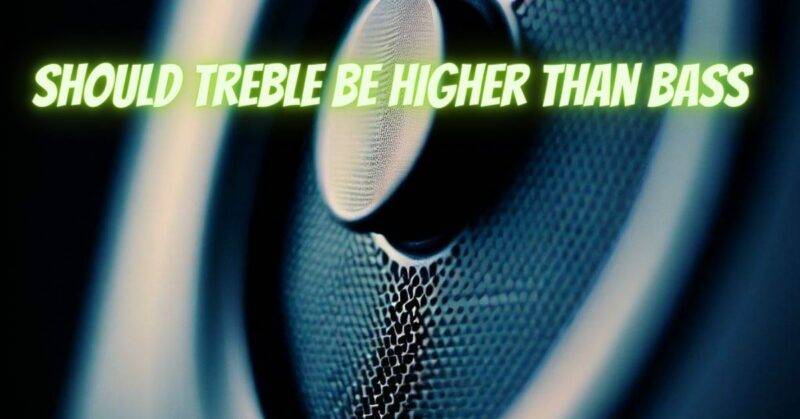Finding the optimal balance between bass and treble is a crucial aspect of audio tuning. Many audio enthusiasts wonder whether the treble should be set higher than the bass or vice versa to achieve the best sound quality. In this article, we will explore the considerations and factors involved in determining whether treble should be higher than bass or if a different balance is more suitable for your audio setup.
Understanding Bass and Treble: Bass and treble are two fundamental components of audio frequency ranges. The bass refers to the lower frequencies, typically associated with the deep tones and thumping beats, while the treble encompasses the higher frequencies responsible for clarity, detail, and shimmering sounds.
The Role of Personal Preference: It’s important to note that the ideal balance between bass and treble is subjective and largely dependent on personal preference. Some individuals may prefer a more prominent bass presence, while others might prioritize enhanced treble for a brighter and more detailed audio experience. Your personal taste and the type of music you enjoy will influence the desired balance.
Considerations for Setting Treble and Bass Levels:
- Music Genre: Different music genres often have distinct sound signatures and tonal characteristics. For example, genres like hip-hop or electronic music tend to emphasize bass, while genres like classical or jazz may prioritize a balanced representation of all frequencies. Adjusting the treble and bass levels to align with the genre can enhance the overall listening experience.
- Speaker/Audio System Capability: The capabilities and limitations of your audio system, including the speakers, amplifier, and room acoustics, can influence the preferred balance. Some speakers may excel in reproducing certain frequencies more accurately, while others may struggle with specific ranges. Experimenting with different settings and listening carefully to the output can help you determine the optimal balance.
- Room Acoustics: The acoustic properties of your listening environment play a significant role in sound reproduction. Rooms with excessive reverberation or resonance may require adjustments to the bass levels to avoid muddiness or boominess. Similarly, adjusting the treble can compensate for overly reflective or damped room acoustics.
- Dynamic Range and Recording Quality: The dynamic range and recording quality of the audio source also impact the perceived balance. Well-recorded tracks with good dynamic range allow for a more accurate representation of the intended balance between bass and treble. Conversely, poorly recorded or compressed tracks may require adjustments to achieve a desirable sound.
Finding the Sweet Spot: Achieving the ideal balance between bass and treble involves experimentation and careful listening. Start with a neutral setting, where both bass and treble are set to the center or flat position. From there, make incremental adjustments while listening to different types of music, paying attention to the overall tonal balance, clarity, and enjoyment.
Conclusion:
Determining whether treble should be higher than bass or vice versa depends on personal preference, music genre, audio system capabilities, room acoustics, and the quality of the audio source. Experimentation, active listening, and understanding the characteristics of your audio setup will help you find the right balance that suits your taste and enhances your overall listening experience. Remember, there is no one-size-fits-all answer, and the optimal balance may vary from person to person. Trust your ears and enjoy the process of finding the perfect balance between bass and treble for your audio enjoyment.


